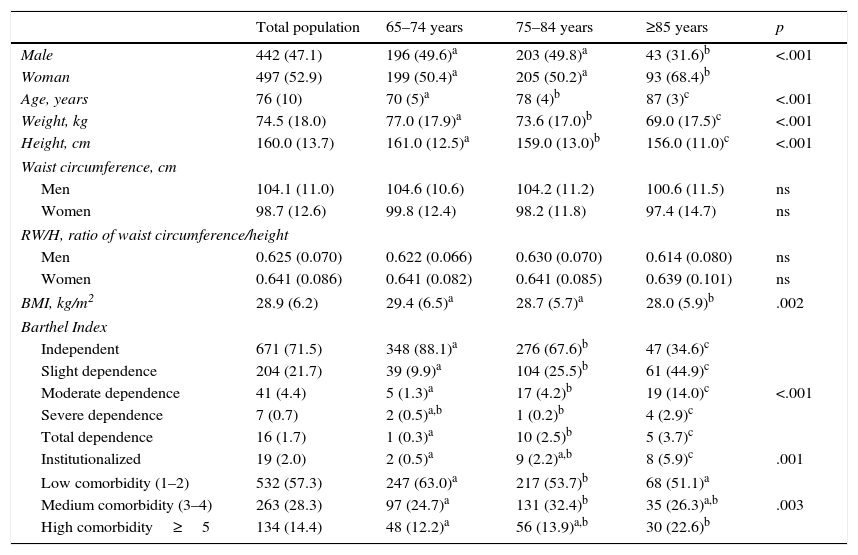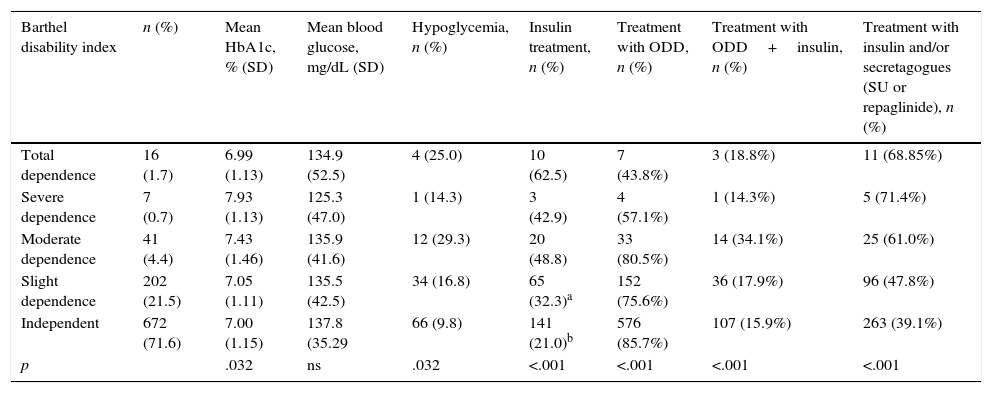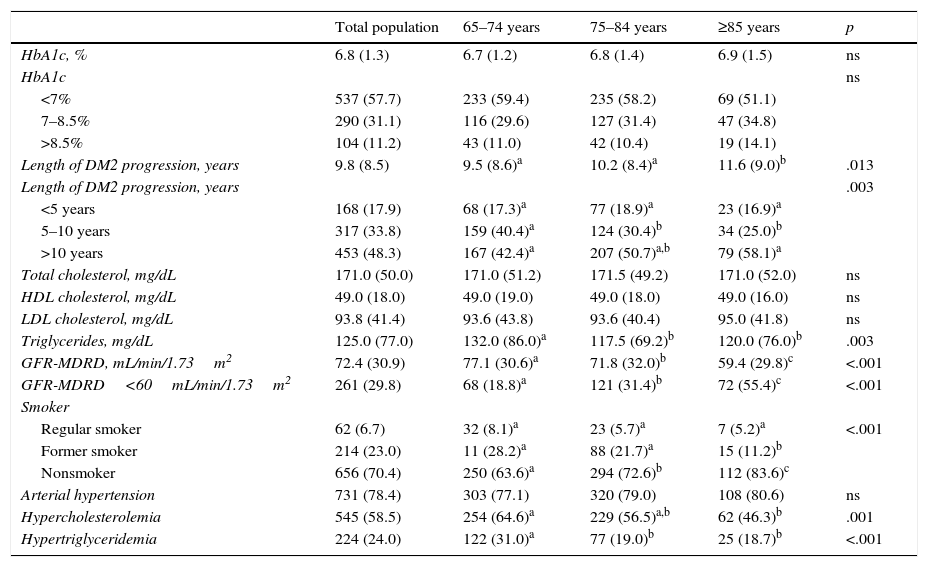To understand the state of glycemic control of elderly patients with type 2 diabetes mellitus in Spain and its relationship with functional capacity and comorbidity.
MethodsCross-sectional, observational, multicentre national study on patients with diabetes mellitus aged 65 years or older. The study analyzed demographic and anthropometric variables, cardiovascular risk factors, clinical and laboratory data, associated comorbidity and treatments.
We analyzed the functional capacity using the Barthel index and the comorbidity with Charlson index.
ResultsThe study included 939 patients with a mean age of 76.4±6.7 years. The mean glycated hemoglobin (HbA1c) level was 7.0%±1.2%, and the mean basal blood glucose level was 137±39.6mg/dL. The HbA1c level showed statistically significant differences depending on the degree of disability. In the patients who were totally, severely, moderately or slightly dependent or who were independent, the mean HbA1c levels were 7.0%, 7.9%, 7.4% and 7.0%, respectively (p<.028). HbA1c levels were 7.3%, 7.1% and 6.9% in the patients with very high, high and medium comorbidity, respectively (p<.001).
ConclusionsMean HbA1c levels in elderly patients with type 2 diabetes analyzed in Spain are below those recommended by the main clinical practice guidelines. The levels are higher in patients who have more functional disability and a higher level of comorbidity.
Conocer el estado del control glucémico de los pacientes ancianos con diabetes mellitus tipo 2 en España y su relación con la capacidad funcional y la comorbilidad.
MétodosEstudio transversal, observacional, multicéntrico, de ámbito nacional, en pacientes con diabetes mellitus≥65 años. Se estudiaron variables sociodemográficas, antropométricas, factores de riesgo cardiovascular, datos de exploración clínica y analíticos, comorbilidad asociada y tratamientos utilizados.
Se analizó la capacidad funcional mediante el índice de Barthel y la comorbilidad con el de Charlson.
ResultadosSe incluyeron 939 pacientes. La edad media fue 76,4±6,7 años. La hemoglobina glucosilada (HbA1c) media fue 7,0±1,2% y la glucemia basal media 137±39,6mg/dl. El nivel de HbA1c presentó diferencias estadísticamente significativas según el grado de discapacidad. En los pacientes con dependencia total, grave, moderada, leve o independientes las concentraciones de HbA1c media fueron de 7,0%, 7,9%, 7,4% y 7,0% (p<0,028) respectivamente. Los niveles de HbA1c fueron de 7,3%, 7,1% y 6,9% en los pacientes con comorbilidad muy alta, alta y media, respectivamente (p<0,001).
ConclusionesLos valores medios de HbA1c en los pacientes ancianos con diabetes tipo 2 analizados en España son inferiores a los recomendados por las principales guías de práctica clínica. Son más elevados en los pacientes que presentan mayor grado de discapacidad funcional y un nivel más alto de comorbilidad.
Article
Diríjase desde aquí a la web de la >>>FESEMI<<< e inicie sesión mediante el formulario que se encuentra en la barra superior, pulsando sobre el candado.

Una vez autentificado, en la misma web de FESEMI, en el menú superior, elija la opción deseada.

>>>FESEMI<<<










